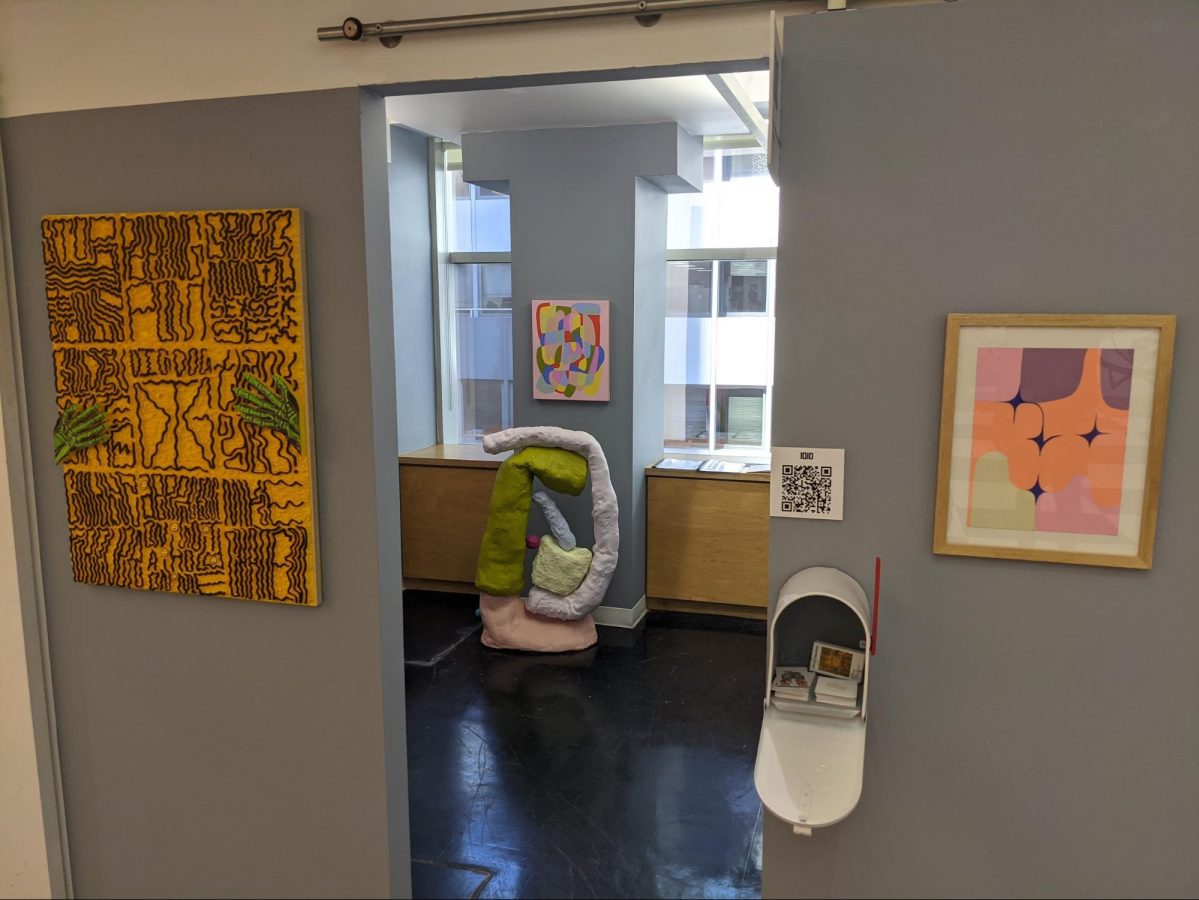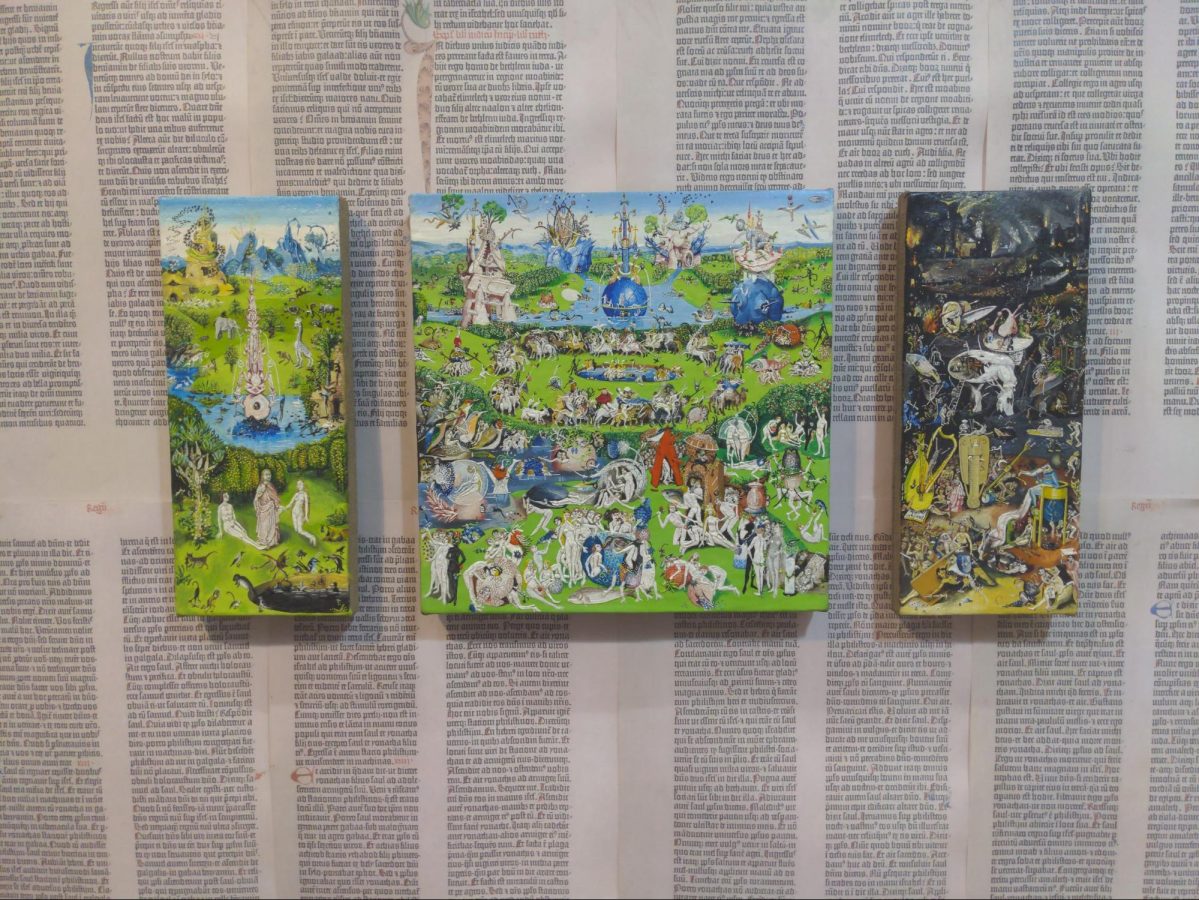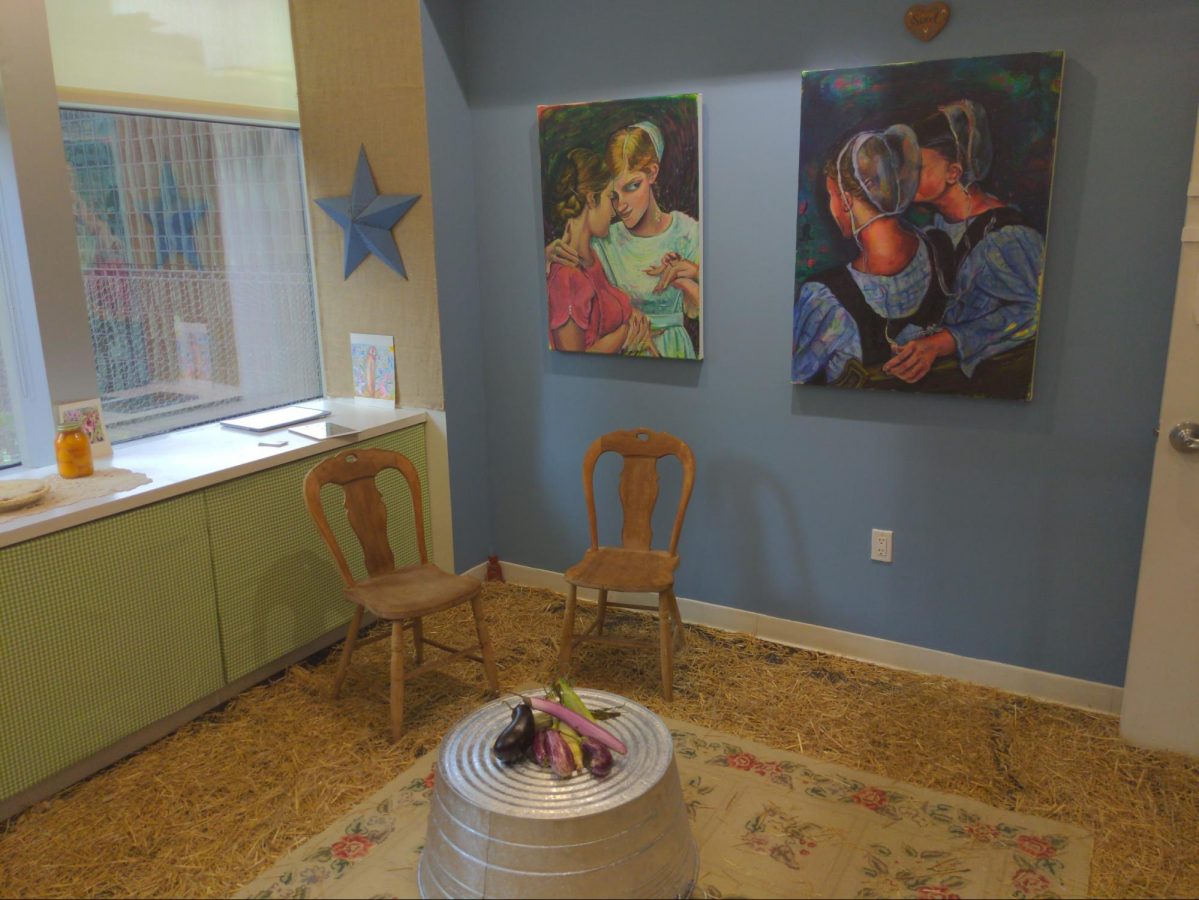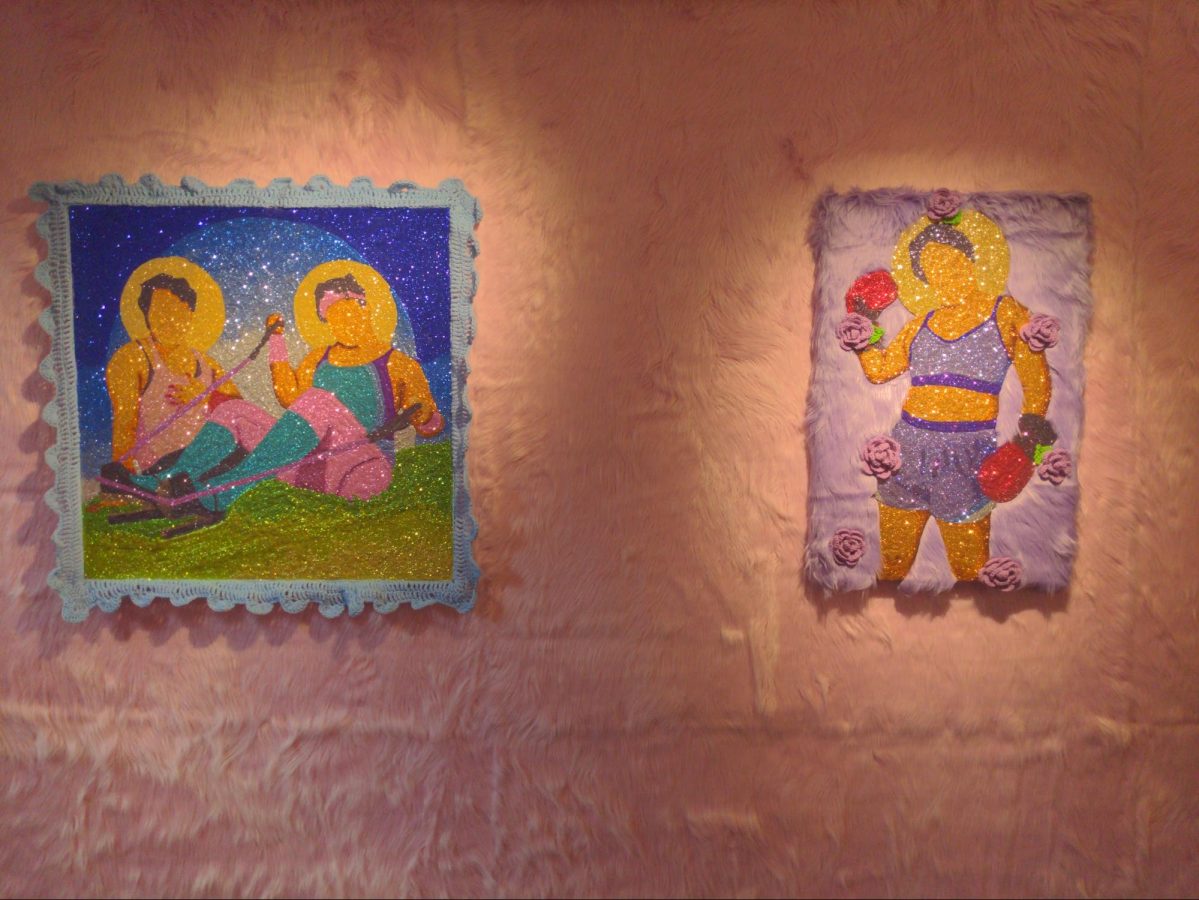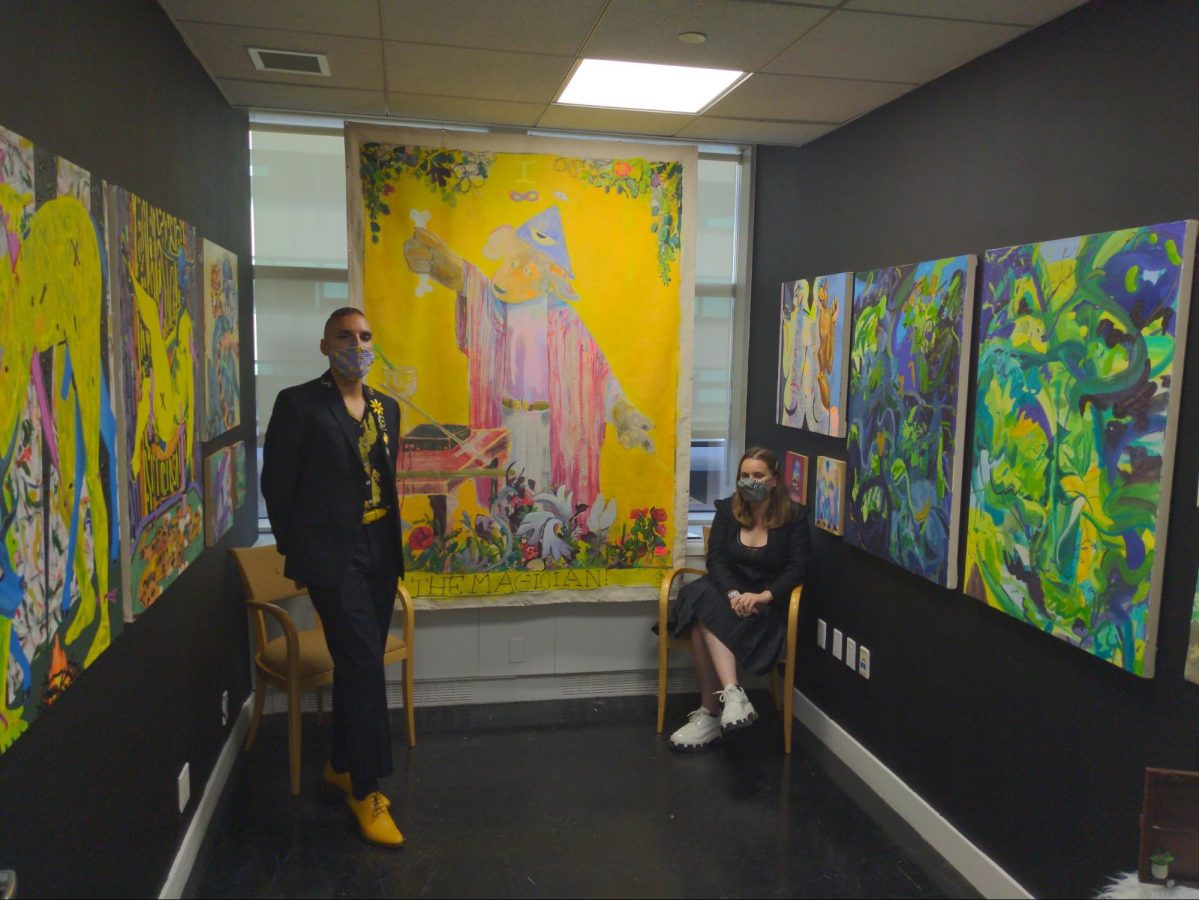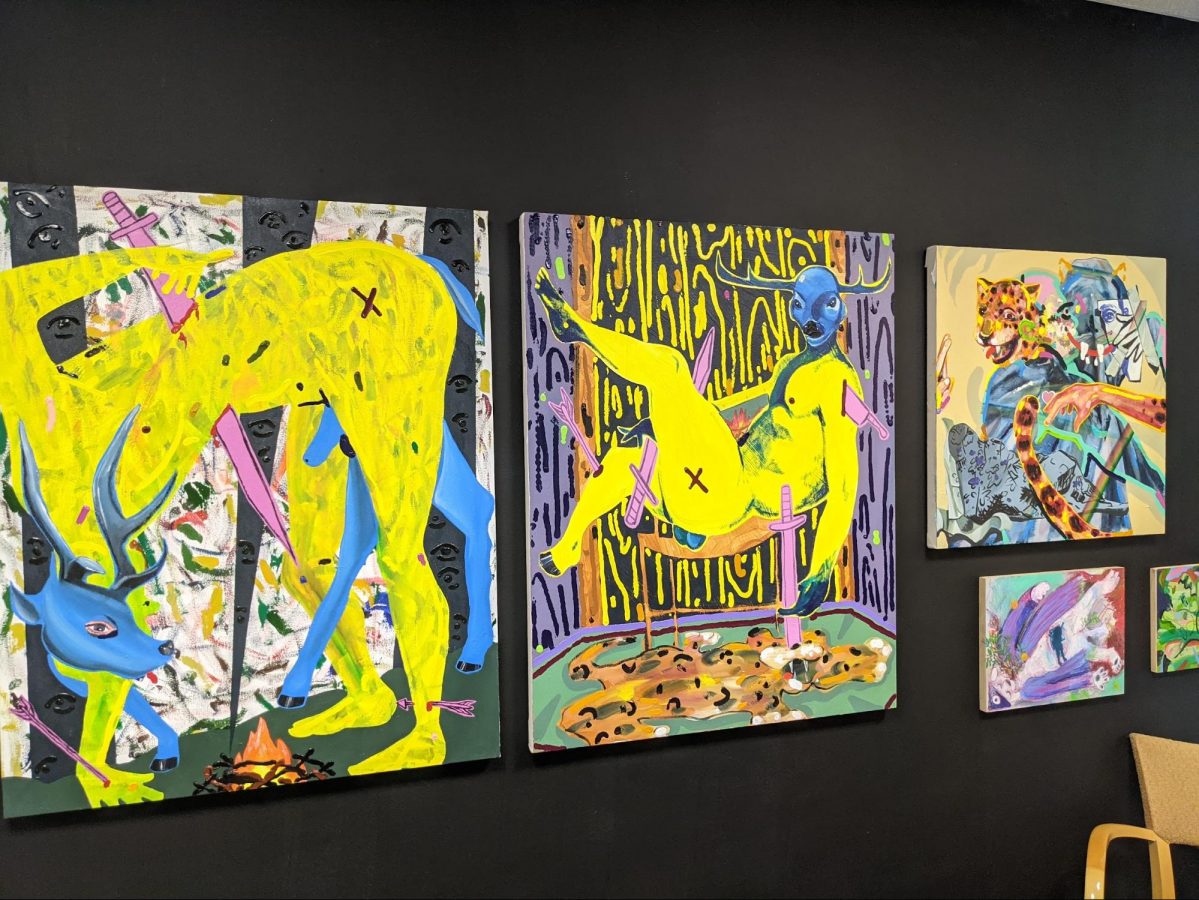Last year’s SPRING/BREAK Art Show was one of the last big art events before COVID shut the world down. So it’s hard not to think of this not-quite-Springtime comeback edition as a bookend to a really weird, really terrible era. The show, now in its tenth year, doesn’t actually look that different from past iterations. The curator-centric show still favors colorful, crafty, and playful work that transforms its banal context—two vacant floors of a Manhattan office building. But this year, I can’t help but think how much the usual plethora of craft and process-centric pieces have totally eclipsed high production values and tech as a reflection of the pandemic’s impact on artists’ access to studios, supply chains, and outsourcing.
Almost all of the artworks here proudly look handmade and homemade. Seeing them in the context of vacant cubicles is a strangely validating and optimistic experience. If we’re to believe the Zoom-and-gloom “Death of the City” headlines that proliferated as COVID made office spaces some combination of verboten and subsequently obsolete, there will be plenty of these large floorplate spaces with labyrinthian layouts sitting empty in the middle of our cities for some time to come. SPRING/BREAK serves as a long-running model for creative, joyful reuse of these seemingly soulless spaces.
SPRING/BREAK, with its emphasis on curators or artists-as-curators, easily remains one of my top favorite art-fair-adjacent events. I can’t say I like absolutely all the art here, but I can’t bring myself to actively dislike any of it, which is a pretty big accomplishment. This year, dozens of curators were invited to organize exhibitions around the theme HEARSAY:HERESY—a timely prompt in this age of fake news and ever raging culture wars, yet one that often manifested in decidedly Medieval aesthetics. But perhaps the Dark Ages are making a comeback! Between plagues, the return of Sharia law, and rollbacks of reproductive rights, everything a millennium old is new again!
Below, just a few of the notable projects that caught my eye at the preview:






